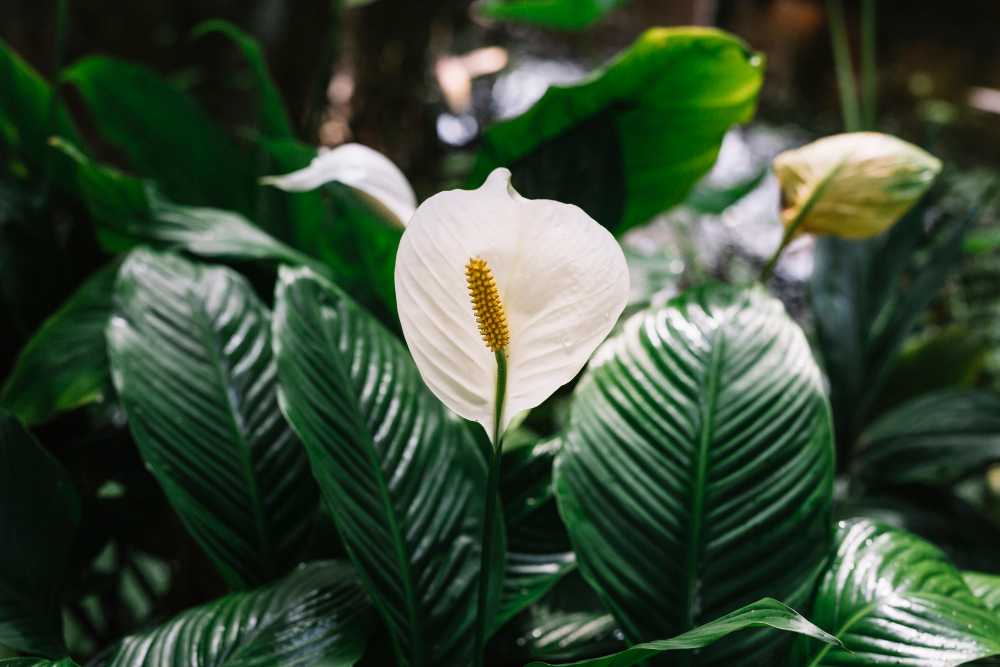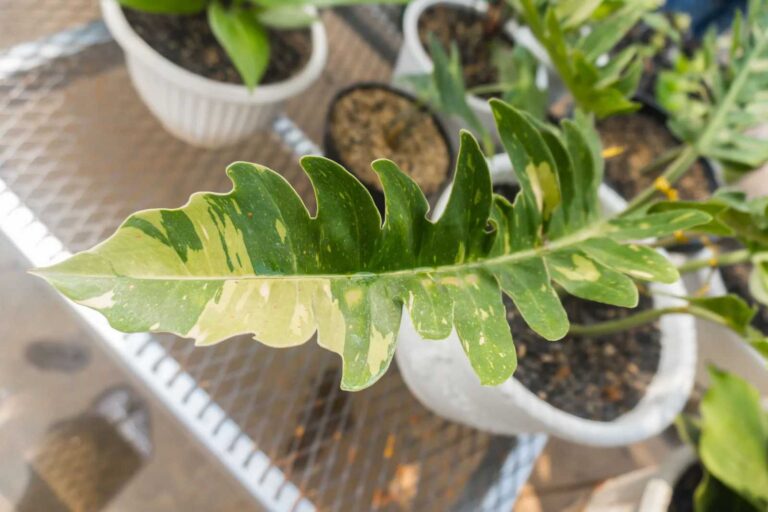The Ultimate Guide to Spathiphyllum Kochii: Care, Uses, and More
Peace Lily, also called the Spathiphyllum Kochii, is a perfect houseplant for beginner gardeners. It is easy to care for and diverse enough to capture attention. The luscious plant has, over time, become a favorite houseplant for more homeowners. You can also use it to brighten your office or as a long-lasting gift to your loved ones.
While caring for Spathiphyllum Kochii is easy, you should observe some of the best indoor cultivation, propagation, and blooming practices.
What is Spathiphyllum Kochii?
Spathiphyllum Kochii is closely related to other houseplants like the elephant ears, dumbcane, and philodendron. Below are a few things you should know about this plant:
Peace Lily Origin and History
Peace Lily is native to Southeast Asia and Central and South American rainforests. It started becoming a household plant in Europe and other cool regions in the 19th century and is currently a favorite for homeowners starting their indoor garden.
Though widely referred to as peace lilies, they aren’t real lilies. Their white patches are the only thing that makes peace lilies resemble lily flowers. Peace Lilies belong to the genus Spathiphyllum genus of the Araceae family. This genus has over 50 natural species and hybrids of grass-like plants.
Peace Lily Basic Characteristics
Light requirements: Flourishes in low to medium indirect light. Direct sunlight burns the foliage, while too little lighting produces fewer flowers.
- Growth rate: Slow in winter, moderate in optimal conditions.
- Hardiness: Can be grown indoors and outdoors in warmer regions.
- Habit/size: Vase-shaped and grows with an upright habit.
- Foliage: Glossy green foliage with leaves extending up to 20 inches.
- Flowers: Flowers have modified leaf bract that protects the spadix. Several flowers appear simultaneously, especially during spring and sporadically throughout the year.
- Toxicity: Peace lily is toxic to children and pets if ingested. It can also cause skin irritation on contact.
What Are the Uses/Benefits of Spathiphyllum Kochii?
Besides their decorative benefits, you should grow peace lilies for the following benefits:
1. Air purifying properties
Several indoor plants, including the Spathiphyllum Kochii, are excellent indoor air purifiers. Studies have shown that peace lilies significantly reduce indoor air pollutants like benzene, xylene, and ammonia.
Peace lilies also absorb toxins like acetone that can compromise your health. As such, growing peace lilies in your home or office positively impacts your indoor air quality.
2. Helps balance the humidity levels
You should also grow peace lilies for their effectiveness in balancing humidity levels. They are tropical plants, which means they absorb humidity from nature. This helps restore your indoor environment’s humidity levels and makes your home more comfortable. Besides comfort, ensuring there is a balanced humidity level in your home prevents mold and mildew growth.
3. Ornamental value
Peace lilies are undeniably beautiful plants. Their glossy leaves and white flowers add a touch of elegance to any room. This makes them perfect for anyone who wants to add greenery to their home without struggling with heavy maintenance.
These plants also complement your room’s décor, whether as part of your houseplants collection or as a standalone plant. You can use it to create a perfect focal point in your home.
4. Alleviates allergy
Adding peace lily to your home is worthwhile if you or your loved one is struggling with allergic reactions. Peace lilies effectively reduce mold spores, airborne pollutants, and other allergens in the air.
5. Boosts productivity
Adding greenery to your home or work office can boost productivity. Studies found that indoor plants can increase employee productivity by 15%. Participants in the study noted that being around plants improves concentration and satisfaction. As such, buying peace lilies is a worthy step if you are looking for new ways of boosting your productivity.
6. Potential stress reduction benefits
Peace lilies are also thought to have a positive effect on mental health. They can reduce stress and provide other therapeutic benefits. Studies have shown that indoor plants potentially lower physical and mental symptoms of stress. Being around plants suppresses the sympathetic nervous system, inducing relaxation of the mind and body.
How to Care for Spathiphyllum Kochii
Follow this care guide if you’ve decided to include peace lily in your plant collection.
1. What to Do Before Planting Peace Lily
While there is no exact formula for planting indoor plants, you should observe the basics. For instance, you should choose the right container. You should plant your lilies in a well-draining container that isn’t 1/3rd larger than the plant’s root ball.
The next thing is picking the location. Even though peace lilies don’t have specific indoor growing conditions, you shouldn’t expose them to direct sunlight. You should also protect it from drafts and interference by pets and children.
Dwarf varieties of peace lilies grow to about one foot tall, while large species can reach up to six feet. They are relatively slow-growing plants, and it will take a while before they outgrow their designated space. They also seldom require repotting.
2. Ideal Lighting for Peace Lily
Peace lilies naturally grow on forest floors and areas that receive indirect, filtered sunlight. Therefore, you should mimic these conditions for the best results. While this plant can survive any light conditions, you should keep it in darker locations to increase foliage and blooming.
3. How and When to Water Peace Lilies
Peace lilies thrive in moist soil. However, this doesn’t mean leaving standing water in the pot. That said, move the plant to the sink or shower anytime you want to water. Use filtered water to protect the plant from chlorine and fluoride. Ensure water drains from the top to the bottom of the pot and drain excess water.
You should only water your peace lilies when the top inch of soil starts drying. You can confirm this using your finger or a moisture meter. Ideally, peace lilies should be watered once every two weeks.
4. When, Why, and How to Fertilize Peace Lilies
Indoor plants also need nutrients to grow and flourish. Peace lilies rely on potted soil for nutrients. Unlike in nature, where these nutrients get replenished naturally, you should fertilize your potted soil to replenish nutrients. The best time to fertilize peace lilies is during the growing season. This is between late winter and the end of summer. You should fertilize it once every six weeks.
5. Pruning Peace Lily
Peace lilies should be pruned under the following circumstances:
- When the leaves turn brown
- After flowering
Regardless of the circumstance, you should clip the dead leaf or browned flower stalk away from the plant’s base. Use sterilized pruning shears and clean them after each clip to avoid spreading bacteria and diseases between plants.
6. How to Get Peace Lilies to Flower
Peace lilies maintain their green lush all year around and start blooming in late spring or early summer. However, you can modify your indoor conditions to encourage your plant to bloom throughout the year. You can enjoy its white flowers all year round by following these tips:
- Ensure the plant is mature – peace lilies typically mature after one year. It should start blooming once it reaches maturity.
- If the plant hasn’t bloomed, it might not be receiving enough sunlight. Therefore, change its location to a different place where it receives a lot of indirect sunlight. You can also place it close to a strong fluorescent light.
- Check on its nutrition – lack of or weak-looking flowers is a sign of poor nutrition. For this, consider repotting with fresh soil.
- Ensure the pot drains and the plant isn’t sitting in stagnant water.
- Don’t water your plant with chlorinated water.
Making these adjustments encourages flowering all year round. However, the plant should be mature enough to flower.
Common Problems and Possible Solutions
While peace lilies require basic maintenance, they are prone to some problems. You should identify and address these problems:
1. Brown Leaf Edges
Your plant’s leaves may turn brown due to excessive sunlight exposure, over-fertilizing, or lack of water. Adjusting the growing conditions solves this problem.
2. Yellow Leaves
Primarily caused by under and overwatering. However, if one or two leaves are yellow, it is probably because of old age. You should prune the peace lily at the base to solve this.
3. No Blooms
Waiting for your plant to bloom in vain is certainly disappointing. In most cases, peace lilies don’t bloom due to lack of sunlight. You should also check on the plant’s growing conditions.
4. Pests
While peace lilies are resistant to pests, they are affected by scale, mealybugs, and spider mites. Wipe the affected leaves with water or alcohol-soaked cloth or spray the plant with neem oil or any insecticidal soap to kill pests.
5. Root Rot
Root rot occurs if you leave standing water in the pots. Draining the pot and drying out the plant between watering eliminates this problem.
The Bottom Line
Indoor plants are a must-have for anyone who likes plants and flowers. With good care, these incredible plants can thrive in your house. Peace lily is a good choice because of its low maintenance requirements. It is also a very showy plant that blooms with eye-catching flower stalks. Use the tips mentioned above to grow and care for your plant.




